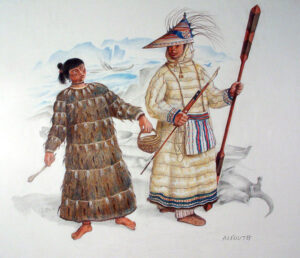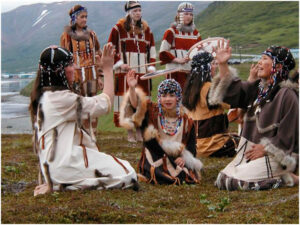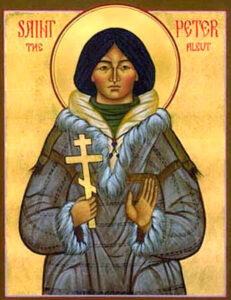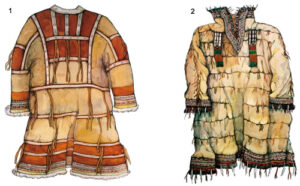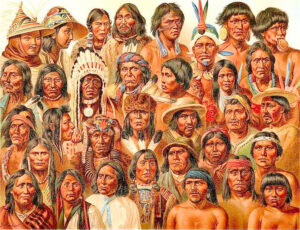Aleuts
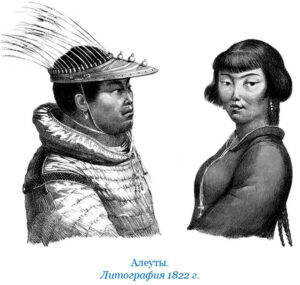
Place of residence. In Russia Aleuts live in the Commander Islands (Medny, Bering islands) and most of the Aleuts live in the USA (Alaska, the Aleutian Islands).
Origin and settlement.
The history of the research of the Aleuts begins with the discovery of the Aleutian Islands in 1741 by the Second Kamchatka Expedition. The Russian sailors, researchers and industrialists collected data on the culture of the people. For a long time there were two hypotheses of Aleuts origin. By the first hypothesis, the Aleuts came from the north-eastern Asian coast, by the another – from Alaska. The research proves that the anthropological type of language and culture was formed 6000-4500 years ago. There are a suggestion, that the Aleuts filled the southern group of Eskimo peoples, from the different view – they formed long time ago into an independent ethnic group.
Articles




